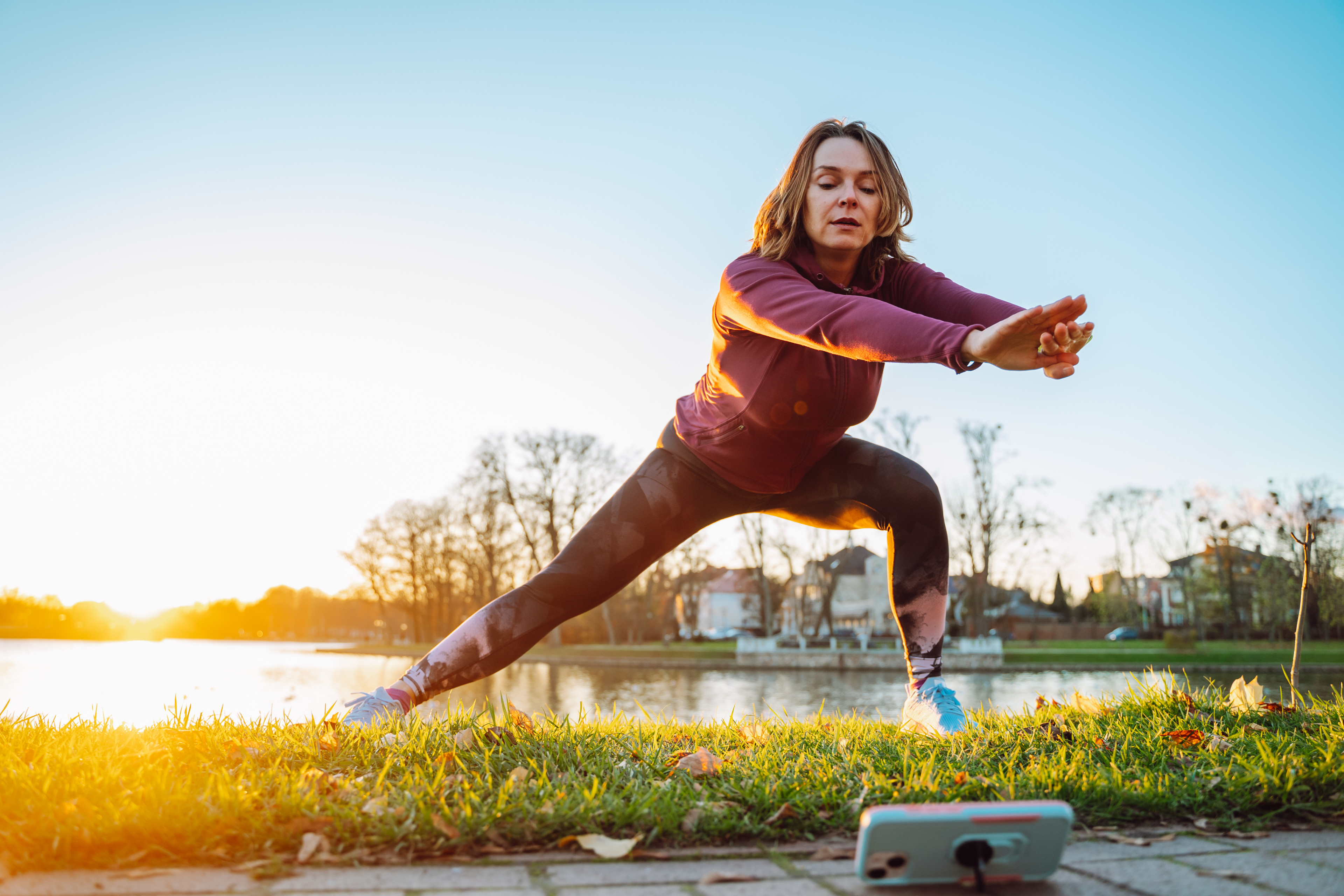
Prostock-Studio/iStock/Getty Images Plus via Getty Images
Why You Need to Switch Up Your Leg Day with More Lunge Variations
Work all 360 degrees of your lower body by adding these lunge variations to your routine.
By Lauren Mazzo•
The Benefits of Doing Lunges
How to Do a Classic Lunge
How to Choose the Best Lunge Variation For You
8 Lunge Variations to Challenge Your Lower Body
Tips to Keep In Mind For Proper Lunge Form
If you really think about it, every step you take is a bit like falling. And do you know what move teaches us to catch ourselves as we fall? Lunges (plus, their many variations).
“If you were to film somebody walking or running, then went frame by frame, the person would lift up a leg, their center of gravity and mass falls forward, and before they actually fall, they re-establish a base of support, putting the leg back down in front of the body,” explains Peter Ronai, clinical professor of exercise science at Sacred Heart University in Fairfield, Conn., and a fellow of the American College of Sports Medicine (ACSM). “To me, the lunge is nice because it sort of imitates what human beings naturally do.”
It’s not just walking and running, either. Climbing up into a car, stepping out of the shower or bathtub, sidestepping someone on a busy city sidewalk—these are all, in a way, lunging motions, and they’re infinitely varied in their exact movement pattern. That’s why just one type of lunge isn’t enough to sufficiently train your body for sports or life. Your best bet is to lunge in all different ways, depths, and directions.
Enter, lunge variations. If you’re not already convinced of their worth, keep reading to understand the benefit of lunges (of all types), why it’s worth including a variety in your routine, and the lunge variations to put on priority.
The Benefits of Doing Lunges
First of all, lunges help build strength in the lower body—primarily in the quads, hamstrings, and glutes, but also in the calves and shins, says Peloton instructor Cliff Dwenger. “The core muscles also get activated and trained during a lunge to keep the body in balance.” he says. Another benefit is improved joint health. “The ankles, knees, and hips will increase in stability but also in range of motion and therefore become more functional,” he adds.
The single-leg balance element is also key, Ronai adds. “When you're on one foot, your body tells your nervous system: now I'm down to just one support,” he explains. Muscles from your upper thigh all the way up to your shoulder girdle have to come into action to keep your body stable and upright, he says. It’s not only important for athletes but also for helping to prevent falls and injuries.
The fact is, even a nonathletic life requires you to backpedal, run, pivot, sidestep, and step up onto things. “If you can't do these functions, it can make a lot of what we do difficult, or in some cases, impossible,” Ronai says. “Exercise enhances your repertoire of movements. It enables you to master a task that comes up unexpectedly—a slip, a trip, a trip, a limited-space movement, or anything where your body has to assume a different angle than it ordinarily would.”
How to Do a Classic Lunge

Lunge variations are great, but that doesn’t mean it’s not worth mastering the original. Here’s how to do a classic forward lunge properly, according to Cliff.
Start standing with your feet hip-width apart, hands on your hips, and core engaged.
Take a big step forward with your right foot, keeping your feet about hip-width apart and most of your weight in your heel. Bend both legs to lower into a lunge position so the back knee hovers just off the floor. Keep your back flat and core engaged, with your torso upright or leaning slightly forward if needed.
Push off the front foot to step it backward next to the left, returning to start. That’s one rep.
How to Choose the Best Lunge Variation For You
Everyone should consider mixing up the lunges in their routine for general well-being and longevity. “By including different types of lunges, you benefit from moving in a different plane of motion, which is important in our day-to-day life,” Cliff says. Ronai agrees: “There are so many everyday moments where we move in multiple directions, sometimes simultaneously, and the lunge can be used as a tool to enable you to do that better.”
If you’re looking to target certain muscles, that’s one way to narrow down your lunge menu. “Different muscles get activated with different variations,” Cliff says. For example, “in a lateral lunge, the adductors are recruited more (in addition to the quads, hamstrings, and glutes), whereas in a front lunge the quads, hamstrings, and glutes are the main muscles.”
You might also consider lunges that drill a similar movement pattern to a sport you play. Pickleballers, tennis players, or athletes who do a lot of side-to-side and forward-and-back shuffling might incorporate lateral lunges, curtsy lunges, and reverse lunges, for instance. Skiers and surfers might benefit from lunges with upper-body rotation.
It’s also important to consider your abilities. Lunges have a reputation for bothering people’s knees, and if that’s you, it may be wise to scale back. “I would generally recommend only doing lunges when pain-free,” Cliff says. If you are having pain when doing any type of lunge, Cliff recommends seeing a pro to help find the cause of the pain, and doing other moves to build strength, balance, and mobility until you’re pain-free.
In general, more beginner-friendly lunge variations keep both feet on the ground (think: split squats or lateral lunges with your feet planted wide). You can also decrease the range of motion so you’re not going as low; the National Strength and Conditioning Association (NSCA) maintains that you’ll still activate all the muscles used in a lunge, challenge balance, and improve functionality. More advanced lunge variations will extend the amount of time you spend on one foot, place more weight in one leg, add external resistance (like dumbbells or a kettlebell), incorporate your upper body, or add a plyometric element, like asking you to jump, Ronai says.
8 Lunge Variations to Challenge Your Lower Body
There are near-infinite ways to modify or progress lunges, Ronai says, but here are a few specific variations to get you started.
Step Ups
Step ups are actually a variation of a lunge in its simplest form, Ronai says. This one is particularly beginner-friendly since you choose the platform height and is great for drilling the functional movement you’ll need to go up stairs, etc. It’s great for targeting your butt muscles, which is why pros also love it as a glute activation exercise.
Stand facing a step or bench. Place your entire right foot onto a step.
Shift your weight onto your right foot to step up onto the bench, bringing your left foot next to your right.
Slowly step down with the left foot to return to the starting position.
Muscles worked: Gluteus maximus, gluteus medius, gluteus minimus, hamstrings, quads, calves
Front-Foot-Elevated Lunge
Somewhere between a step-up and a lunge is this beginner-friendly lunge variation. It’s a great choice for people not yet ready for lunges as it decreases the stress on the front leg, reducing the difficulty, per the NSCA.
Find a low aerobic step or stable platform less than six inches tall, and place it on the floor in front of you. Start standing in a split stance with your front foot on the step and your rear foot a few feet behind, balancing on your toes on the floor. Your feet should be about hip-width apart.
Without moving your feet, bend both knees to lower into a lunge. Pause when your front thigh is about parallel to the floor or as low as is comfortable for you.
Press into the front foot to straighten both legs and return to start.
Muscles worked: Quads, hamstrings, glutes
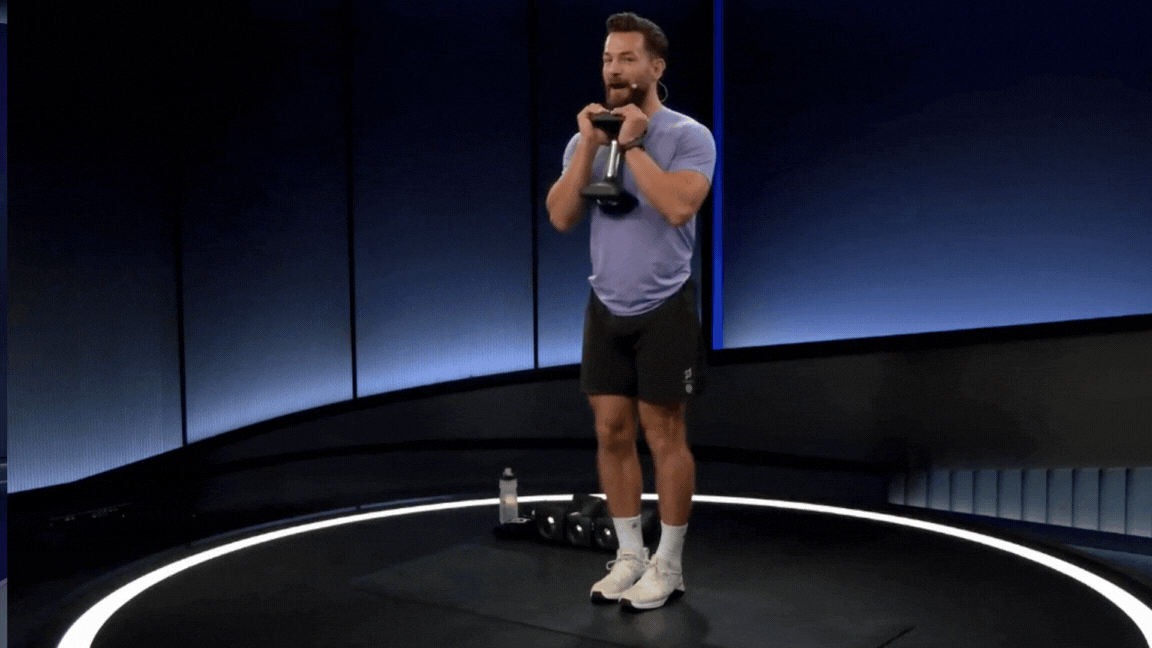
Reverse Lunge
“A lot of people have tight hip flexors from sitting,” Ronai says. Reverse lunges can help with that. “If you do them properly and keep your core in a well-controlled, stable position, you’ll do a nice job stretching the hip flexors, and at the same time, activating the front leg gluteus maximus: a large, powerful, important muscle for daily function and for sports and athletics, and something that's weak when you sit a lot.”
Stand with your feet about hip-width apart.
Step your right foot backward, bending both legs to lower into a lunge. Pause when your back knee is hovering just off the floor.
Push off your back foot to step it forward, next to the left, and return to start.
Muscles worked: Quads, hamstrings, gluteus maximus
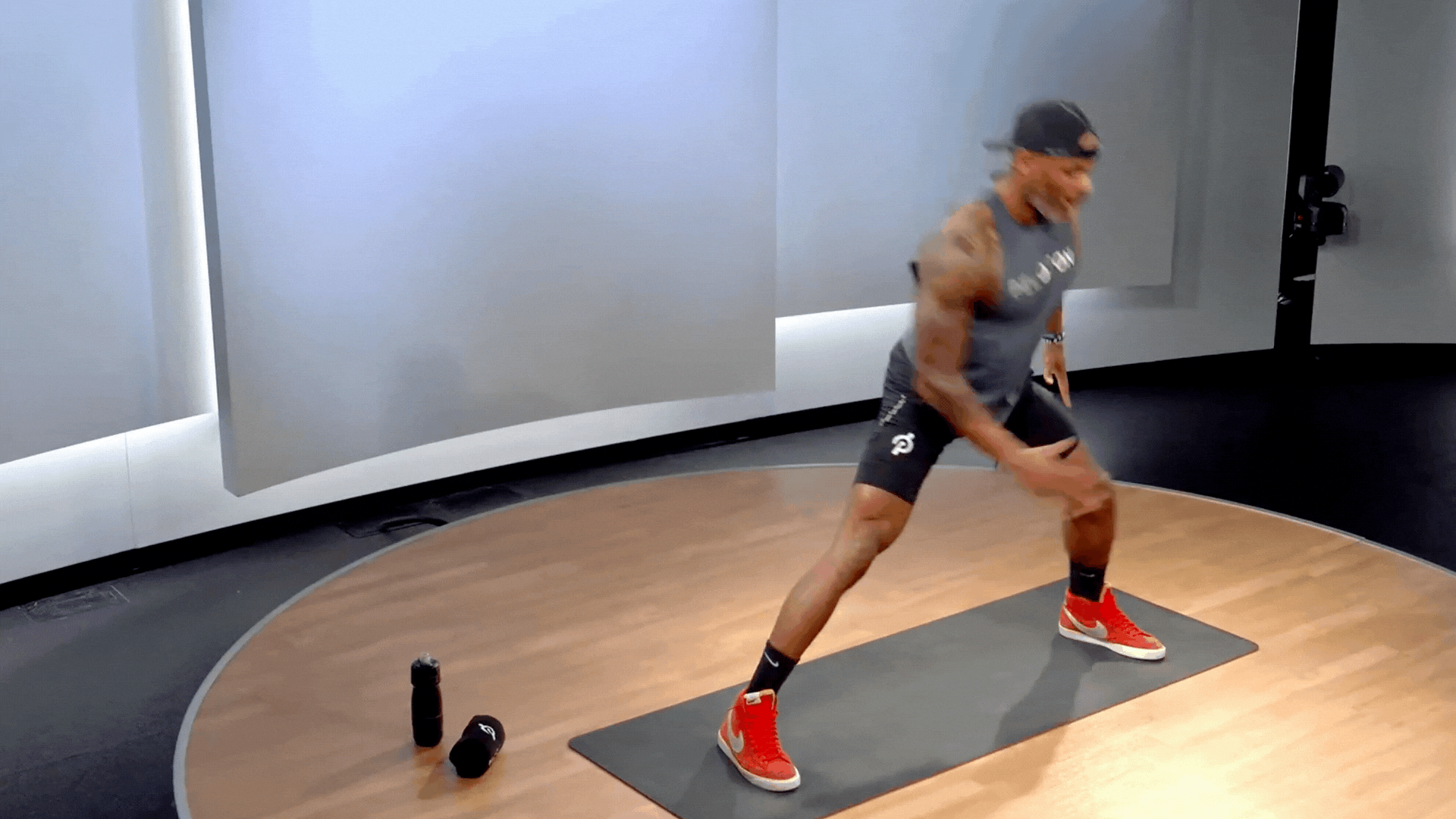
Lateral Lunge
Cliff loves this lunge variation because it trains your body in a different range of motion from most other strength exercises. “Typical gym machines often only allow movements in the sagittal plane,” he says—that is, front-back motion. Lateral lunges move you in the frontal plane—side-to-side motion. “We move in different planes of motion [in life], so it is important to implement these movement patterns into your training routine,” he says.
Stand with your feet pointing forward, about hip-width apart.
Take a big step to the side with your right leg, bending it as you sit your hips back and lean your torso slightly forward. Keep your left leg straight and your toes pointed forward.
Push off the right foot to step it back next to the left, returning to start.
Muscles worked: Quads, hamstrings, glutes, hip abductors, hip adductors
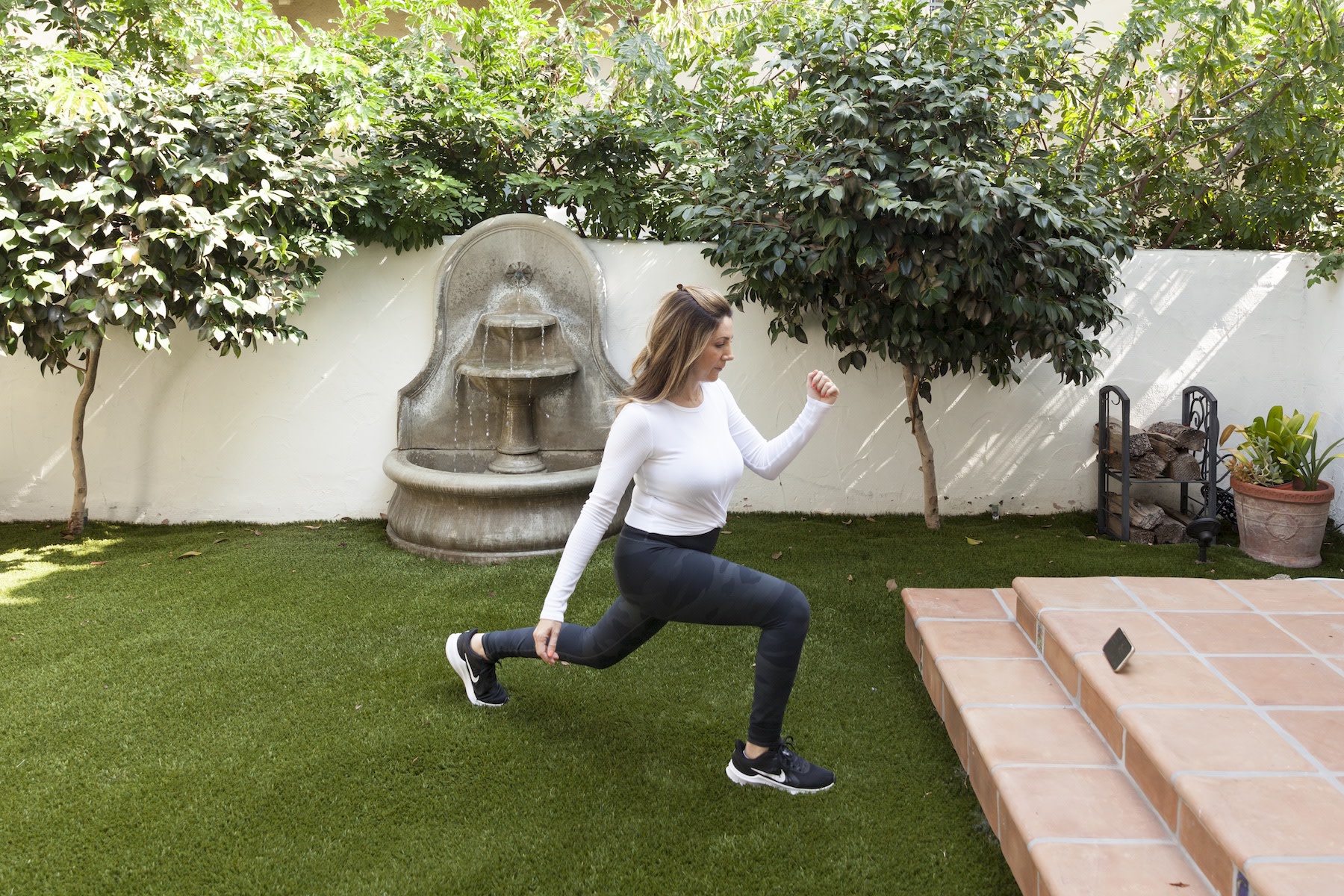
Walking Lunges
Walking lunges (or traveling lunges) are a great lunge variation for more advanced exercisers, Ronai says. It mimics the movement of walking or running, but while taking your muscles through a greater range of motion.
Stand with your feet hip-width apart, shoulders back, and core engaged.
Take a big step forward with your right foot and bend both knees to lower your body toward the ground. Pause when your front thigh is about parallel to the floor.
Push off your back foot, coming to stand on your right leg. Then step forward with your left foot into another lunge on the other side.
Continue alternating legs with each step.
Muscles worked: Quads, hamstrings, glutes, core, calves
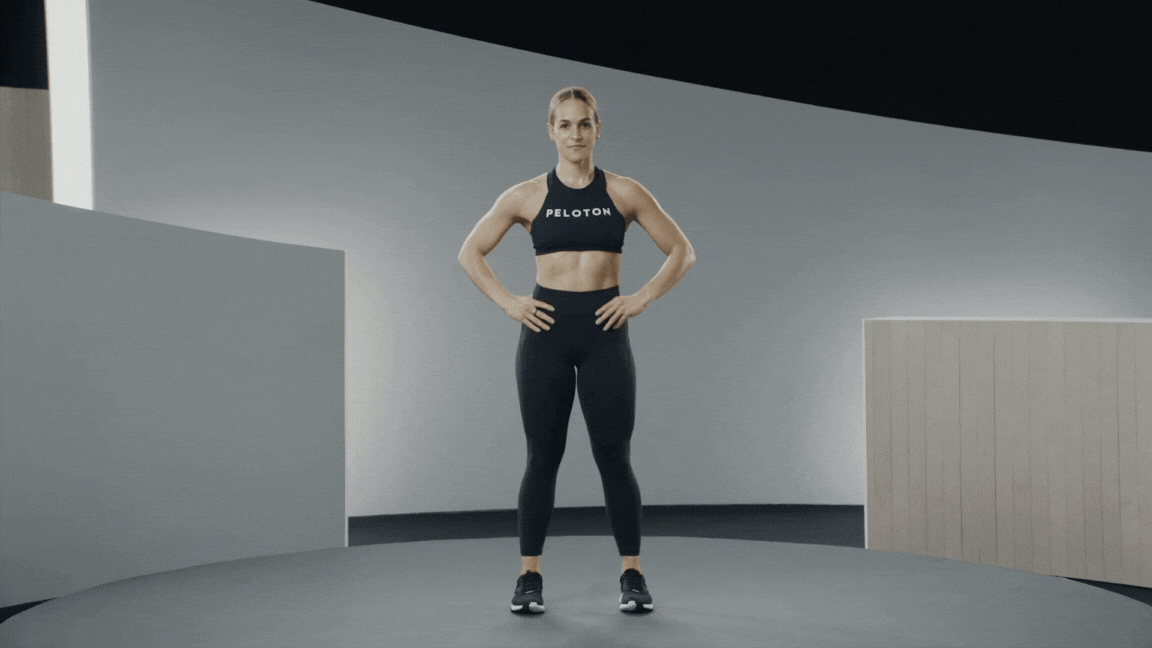
Curtsy Lunge
The curtsy lunge puts a spotlight on your glutes, as it puts your gluteus maximus through a large range of motion.
Start standing with your feet together. Step your right foot behind you and to the left, so your legs are slightly crossed.
Keeping your hips square and chest stall, bend both knees to lower into a lunge, stopping when your left right knee is hovering just off the floor or your front thigh is about parallel to the floor.
Push off the right foot to step it forward, next to the left, and return to start.
Muscles worked: Quads, hamstrings, gluteus maximus, hip abductors, hip adductors, calves

Rear Foot Elevated Split Squats
Rear-foot-elevated split squats (also called Bulgarian split squats) also count as a lunge variation—and a tough one, at that. This move allows you to load more weight in the front leg, putting a lot of emphasis on the glutes while reducing the potential forces on the front knee, Ronai says.
Stand a few feet in front of a bench, chair, or box that’s at knee height or slightly shorter. Pick up a weight(s) if you’ll be using one. Lift and bend one leg behind you, allowing the top of your foot to rest on the bench. Adjust the positioning of your front foot, if needed, until your back shin is about parallel with the floor.
Keeping your chest tall and core engaged, bend your front knee to lower into a squat. Your front knee should track straight over your foot, but not slide forward past your toes. (If that happens you may need to move your front foot farther forward.)
Pause when your front thigh is about parallel to the floor, or as low as is comfortable for you.
Press through your front foot to the front knee and return to start.
Muscles worked: Gluteus maximus, gluteus minimus, hamstrings, quads, hip adductors
Lunge with Rotation
Adding a rotational trunk movement activates the core, works mobility in the front and outside of the hip, and helps mimic other types of movements you might do in sports or everyday life, Ronai says.
Start standing with your feet together and hands clasped in front of your chest.
Take a big step forward with the right foot, bending both knees to lower into a lunge, pausing when the front thigh is parallel to the floor and the back knee is hovering off the floor.
Holding this position, twist the upper body to the right, being sure to keep your hips square to the front.
Untwist your torso and push off the right foot to step it backward next to the left and return to start.
Muscles worked: Quads, hamstrings, glutes, core, hip adductors, hip abductors
Tips to Keep In Mind For Proper Lunge Form
If you can, train in full range of motion, Cliff says. This will make sure you’re getting the full benefits of the move and properly challenging your muscles. If you’re still building up strength, it’s OK not to lunge as deeply.
“A bit of shaking or wiggling during lunges is normal because it trains balance and stability,” Cliff adds, but if your form is really beginning to suffer, consider modifying the move. Either try an easier variation (like a step-up, front-foot-elevated lunge, or regular split squat), use less weight, or perform the move with a smaller range of motion, he says.
It’s also important to make sure your front heel has solid contact with the floor in order to get optimum muscle recruitment and to avoid knee pain or injury, Cliff says.

Peloton App
Access thousands of classes with no equipment needed.
Try Peloton Strength Basics: Lunge
See all classesThis content is for informational and educational purposes only and does not constitute individualized advice. It is not intended to replace professional medical evaluation, diagnosis, or treatment. Seek the advice of your physician for questions you may have regarding your health or a medical condition. If you are having a medical emergency, call your physician or 911 immediately.
This content is for informational and educational purposes only and does not constitute individualized advice. It is not intended to replace professional medical evaluation, diagnosis, or treatment. Seek the advice of your physician for questions you may have regarding your health or a medical condition. If you are having a medical emergency, call your physician or 911 immediately.
Level up your inbox.
Subscribe for a weekly dose of fitness, plus the latest promos, launches, and events.
By providing your email address, you agree to receive marketing communications from Peloton.
For more about how we use your information, see our Privacy Policy.




